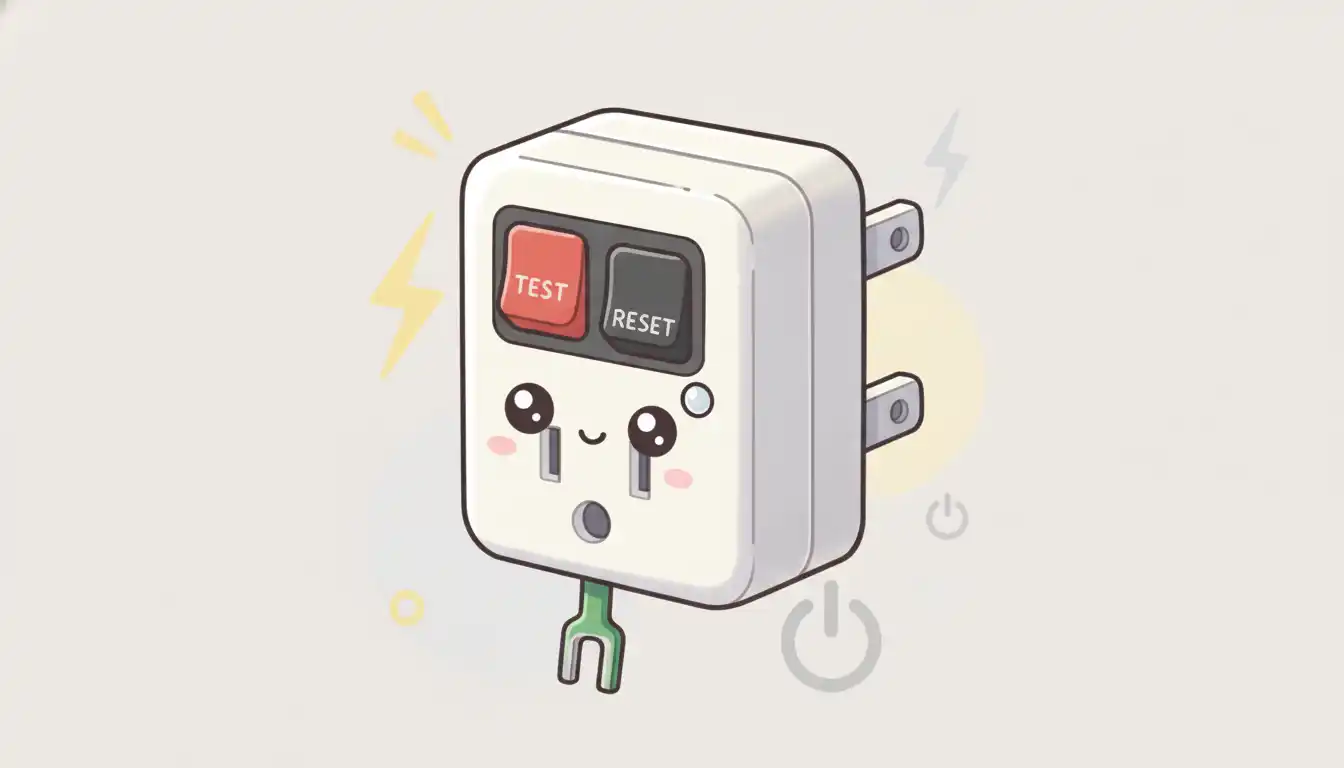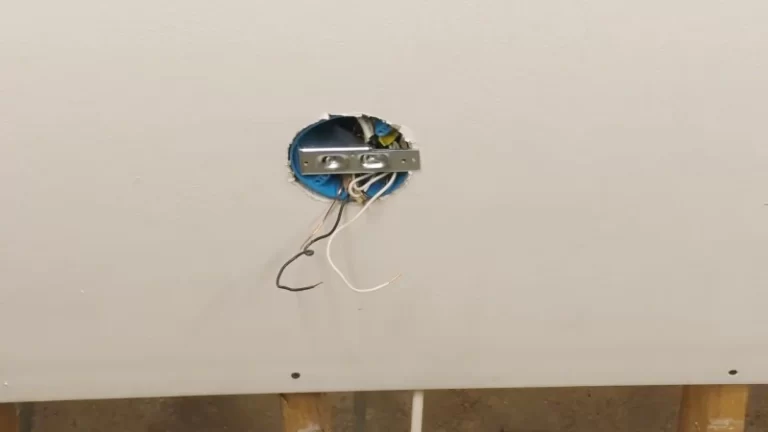2 Prong to 3 Prong GFCI Adapter: The Ugly Truth Before You Plug In
Living in an older home comes with its charms, but it also comes with outdated two-prong outlets. You have a new three-prong appliance in hand, and you’re faced with a frustrating dilemma. The quick, cheap fix seems to be a “cheater” adapter, but that little device is a well-known fire and shock hazard.
A seemingly safer solution has emerged: the 2-prong to 3-prong GFCI adapter. This device promises modern protection for your vintage wiring, but is it the perfect fix it claims to be? Before you plug in and potentially risk your safety and your expensive electronics, there is a brutal truth you need to understand.
You'll Learn About
The Dangerous Allure of Old Outlets
Those two-slot outlets on your walls aren’t just an inconvenience; they represent an outdated and less safe electrical standard. Understanding the risks they pose is the first step toward finding a genuinely safe solution.
Why Your 2-Prong Outlets Are a Ticking Time Bomb
Modern electrical systems use a third wire, the ground wire, as a critical safety feature. This wire provides a safe path for stray electricity to travel in case of a fault within an appliance. Without it, that excess electricity can travel through the appliance’s metal casing or, in a worst-case scenario, through a person.
Plugging a three-prong cord into an ungrounded two-prong outlet, even with an adapter, leaves you and your devices vulnerable. It’s not just about a mild zap; it’s a significant risk of electrocution and electrical fires.
The Deceptive “Cheater” Adapter
Standard 2-to-3 prong adapters, often called “cheater plugs,” are dangerously misleading. They allow you to physically plug a 3-prong cord into a 2-prong outlet, but they do not add the ground protection that the third prong is for. Using one gives a false sense of security while completely bypassing the essential safety feature of modern appliances.
What is a 2-Prong to 3-Prong GFCI Adapter?
Unlike a standard “cheater” plug, a GFCI adapter is an active safety device. GFCI stands for Ground Fault Circuit Interrupter. It’s a piece of technology designed to protect people from severe electrical shocks.
These portable adapters are designed to offer a level of protection where none existed before. They are a significant step up from dangerous cheater plugs, but they are not a magic bullet for outdated wiring.
How GFCI Technology Creates a Safety Bubble
A GFCI device works by constantly monitoring the flow of electricity in a circuit. It measures the current leaving the “hot” side and returning on the “neutral” side. Under normal conditions, these two currents are perfectly balanced.
If the current finds an alternative path—such as through water or a person—an imbalance is created. The GFCI senses this tiny difference in milliseconds and instantly cuts power, preventing a potentially fatal shock.

It’s Not Magic: The Critical Limitation You Can’t Ignore
Here is the most important fact to understand: a 2-prong to 3-prong GFCI adapter does not create a ground connection. It cannot add a ground wire that isn’t physically there in your wall’s wiring. While it provides excellent protection against electric shock to people, it does nothing to provide the equipment ground that many sensitive electronics need.
This distinction is crucial. The GFCI protects you, but it doesn’t protect certain appliances from power surges or internal faults the way a true ground wire does.
Is a Plug-In GFCI Adapter the Right Choice for You?
Deciding whether to use a portable GFCI adapter depends on your specific situation. It can be a valid temporary solution, but it’s vital to recognize its limitations and compare it to other, more permanent fixes.
The table below breaks down the pros and cons of different solutions for ungrounded outlets.
| Solution | Shock Protection | Equipment Protection | Cost | Best For |
|---|---|---|---|---|
| “Cheater” Adapter | None | None | Very Low | Never Recommended |
| Portable GFCI Adapter | Excellent | None | Low | Temporary use with tools, renters, specific applications |
| GFCI Outlet Installation | Excellent | None | Moderate | A code-compliant upgrade for personal safety without rewiring |
| Full Rewiring | Excellent | Excellent | Very High | The best long-term, comprehensive safety solution |
When a GFCI Adapter Makes Sense
A portable GFCI adapter can be a smart choice in specific scenarios. If you’re a renter without the option to change the wiring, it provides a layer of safety that’s otherwise missing. It’s also ideal for temporary situations, like using power tools in a basement or garage with older outlets.
When You MUST Avoid a GFCI Adapter
You should not rely on a GFCI adapter for expensive or sensitive electronics. Devices like computers, home theater systems, and advanced medical equipment often use the ground wire to dissipate static electricity and protect internal components from power surges. Without a true ground, these devices are left vulnerable to damage.
How to Use a Portable GFCI Adapter Safely
If you determine a GFCI adapter is appropriate for your needs, using it correctly is essential for your safety. Treat this device with the same respect you would any other electrical component.
Step 1: Test the Adapter, Every Single Time
Your GFCI adapter has “TEST” and “RESET” buttons for a reason. Before each use, plug it in, then press the “TEST” button. The power should cut off immediately. Press “RESET” to restore power. If it fails this simple test, discard the device immediately.
Step 2: Understand Appliance Compatibility
Remember what the adapter can and cannot do. It is for protecting you from shock. Do not plug a power strip full of computer equipment into it and assume everything is protected from surges. For that, you need a true ground.
Step 3: Never Daisy-Chain
Never plug one adapter or extension cord into another. Plug the GFCI adapter directly into the wall outlet, and then plug your appliance or a single extension cord directly into the adapter. Overloading the circuit is a serious fire hazard.
The Permanent (and Safest) Solutions for Ungrounded Outlets
While a GFCI adapter is a useful tool for temporary safety, it is not a permanent solution. For the long-term safety of your home and devices, you must consider upgrading your wiring.
Gold Standard: Rewiring Your Home
The safest and most comprehensive solution is to have a licensed electrician rewire your home. This involves running new cables that include a ground wire from your electrical panel to your outlets. This is the only way to provide true protection for both people and electronics.
The Smart Compromise: Installing GFCI Outlets
If a full rewire isn’t feasible, the next best option is to replace your two-prong outlets with modern GFCI receptacles. An electrician can install a GFCI outlet on an ungrounded circuit, and it will still provide the same excellent shock protection as a portable adapter. Per electrical code, the outlet must be labeled “No Equipment Ground.”
Beyond Shock Protection: What About Your Devices?
The absence of a ground wire affects more than just shock risk. It directly impacts how other protective devices function and what types of appliances you can safely power.
The Harsh Reality for Surge Protectors
Many people wonder if they can use a surge protector on an ungrounded outlet. The answer is a definitive no. Most surge protectors work by shunting excess voltage from a power surge safely to the ground wire. With no ground wire to divert the surge, the surge protector has nowhere to send the dangerous energy, rendering it useless and potentially creating a fire risk.
Powering Demanding Appliances
High-power appliances often have specific electrical requirements. For instance, finding a safe solution for a 2-prong air conditioner can be challenging because of the high current it draws. Relying on any kind of adapter for such a powerful device is generally not recommended, as it can lead to overheating and pose a significant fire hazard.
Your Final Verdict on GFCI Adapters
A 2-prong to 3-prong GFCI adapter is a valuable safety tool when used correctly and in the right context. It offers excellent protection against electrical shock and is a far superior alternative to dangerous “cheater” plugs. However, it is not a substitute for a properly grounded electrical system.
Think of it as a temporary life jacket, not a permanent solution for upgrading your home’s wiring. For protecting sensitive electronics and ensuring the complete safety of your electrical system, investing in a permanent wiring upgrade by a qualified electrician is always the best course of action.

